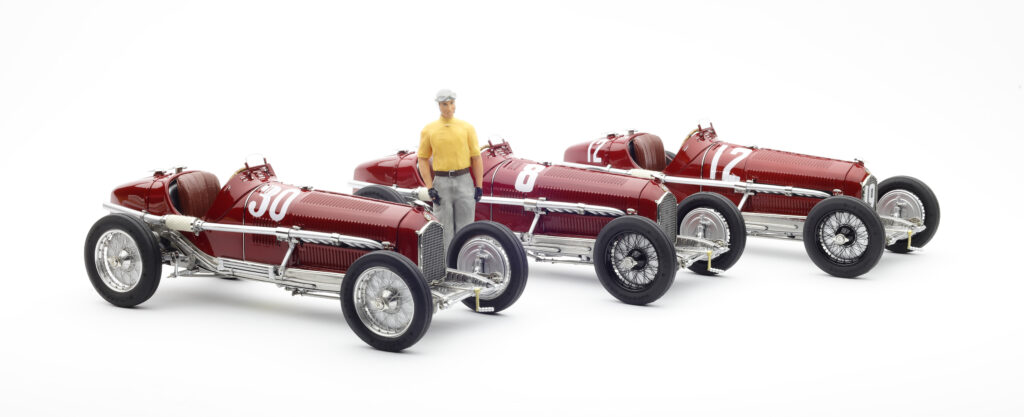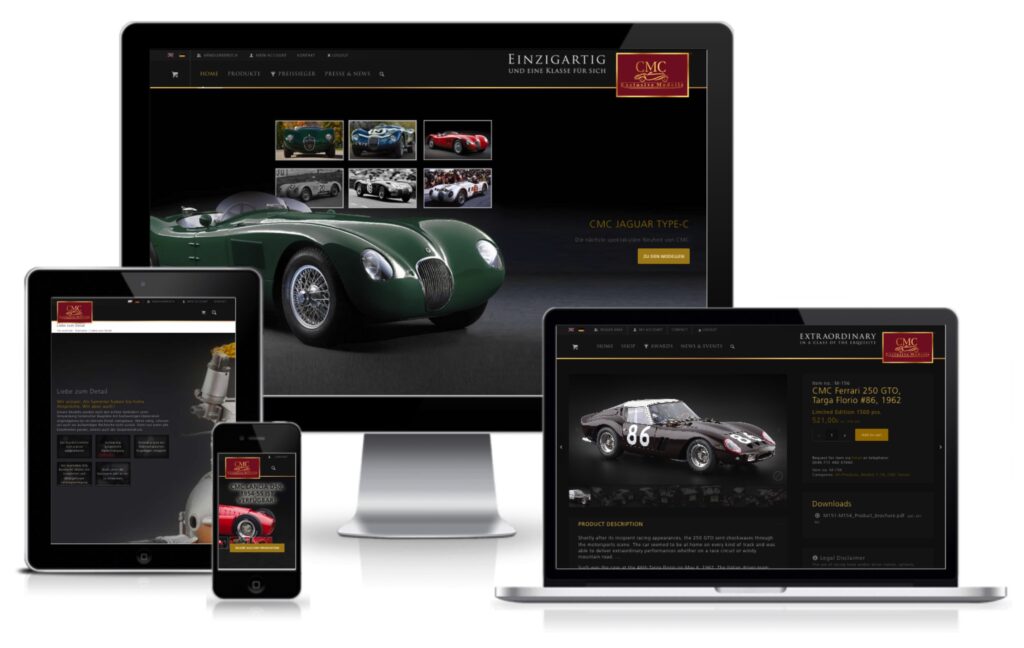CMC Alfa Romeo P3: Alfa Romeo Stable in the Rise of Scuderia Ferrari

Historically Alfa Romeo advocated racing to generate positive publicity for its cars. This sales pitch was attributable to its commercial director Giorgia Rimini, a strong supporter of legendary engineer Vittorio Jano and Alfa Corse, the factory racing team.
One member of that team was Enzo Ferrari, who was inspired at a dinner discussion on October 5, 1929. It led him to consider setting up a team to prepare and enter racing cars for enthusiasts to drive. A few days later he traveled to Alfa’s base in Milan and proposed a ground-breaking scheme, in which Alfa Romeo would become a part of his private racing team – more specifically as a stable or Scuderia in Italian.
In the presence of Alfa management Enzo Ferrari took pains to elaborate how all would gain from his scheme. Alfa Romeo would remain active in racing, a pursuit that would offer cutting-edge solutions to improvement of everyday cars. More clients would go racing on Alfa’s sports cars. Italy would be properly represented in international motorsports.
Then came his knockout punch. With his team entering Alfa Romeo cars, he had this to propose: if they were victorious, it was Alfa Romeo that won. If they were defeated, the loss would be attributed to his Scuderia. Moreover, shares in the new Scuderia Ferrari were offered in exchange for technical assistance and logistic support from Alfa Romeo.
An agreement was reached for cooperation, by which Alfa Corse and Scuderia Ferrari would continue in parallel. But Alfa Corse reserved the right to enter the latest cars in major events. Besides, the Scuderia entries would wear a slightly deeper burgundy hue plus a prancing horse logo on their bonnets. In December, Ferrari Scuderia received one P2, two 6C 1500 Super Sports, and three 6C 1750 Gran Sports.
Scuderia Ferrari was registered as a business on November 29, 1929. In 1930 alone, it helped some 50 wealthy amateurs get ready to race while it engaged professional drivers, such as Tazio Nuvolari, Giuseppe Campari, Achille Varzi, Luigi Fagioli, Louis Chiron and Guy Moll.
Not content with what Alfa Romeo had provided, Enzo Ferrari often traveled 110 miles from Modena to Milan to alert Vittorio Jano and his colleagues to the kind of car he would need in order to win. It resulted in the 8C 2300, which finished 1st and 2nd in the 1931 Italian Grand Prix. Subsequently dubbed “Monza”, the 8C 2300 opened the door to great success at the races of Le Mans, the Targa Florio, and the Mille Miglia.
The 1932 season showed what an important role that the Alfa Romeo stable played in the rise of Scuderia Ferrari to fame. The Alfa Romeo stable was involved in 39 races that year. Among them were the Grand Prix events of Tripoli, Alexandria, Berlin, Nimes, France, the Marne, Belgium, Nice, Italy, Masaryk, and Spain. Not to mention the competitions at the Mille Miglia, the Targa Florio, the Ciano Cup, the Acerbo Cup, the Stelvio Cup and the Spa 24 Hours. These races translated into 26 wins, 13 second-place finishes, and 12 category championships for Scuderia Ferrari in 1932.
The Alfa Romeo P3 or Tipo B made its first outing in the Italian Grand Prix on June 5, 1932, and Nuvolari drove it to 1st place, followed by Campari in fourth place. The Tipo B’s engine was akin to that of the 8C 2300, but with a longer stroke. While it debuted at 2,654 cc, successive bore increases took it to 2,905 cc and then 3,165 cc with a maximum output of 265 bhp.
The Alfa Romeo Tipo B/P3, however, didn’t join Scuderia Ferrari’s stable until 1933, when all was not well at Portello. Italy had come under the rule of a fascist government. It was made public that Alfa Corse was not to race in 1933, all factory-supported racing was entrusted to Scuderia Ferrari. As a result, Enzo took over the full stock of Tipo Bs from Alfa Corse.
The 1933 Grand Prix Italy took place at the Autodromo di Monza on September 10. It was remembered for a heated contest between the 3-liter Maserati monoposto piloted by Nuvolari and Taruffi with the Alfa Romeo Tipo B’s raced by Chiron and Fagioli. During the race there were a total of 16 lead changes among the four race cars. The contest was so breath-taking that the crowd was continuously on their toes. With start number #12, Fagioli eventually drove his Tipo B to a fascinating win against formidable Nuvolari.
The 1933 Marseille Grand Prix resulted in a sensational victory for Louis Chiron, who had just joined Scuderia Ferrari. Once again, a breath-taking duel unfolded between the Alfa Romeo Tipo B that Chiron piloted and the Maserati monoposto that Nuvolari drove. After the first half of the race, Nuvolari managed to maintain an upper hand. On lap 70, he led Fagioli by four seconds and Chiron by sixty-nine seconds. It appeared that Nuvolari would be the victor of the race. But his chances were dashed on lap 80, where a broken rear axle hub forced him to retire. This left the remaining race to be determined by the two Tipo Bs of Chiron and Fagioli. Eventually with start number #42, Chiron won with an advantage of 70 seconds over Fagioli.
The 1933 Comminges GP had an excellent list of entries, including Giuseppe Campari and Luigi Fagioli from Scuderia Ferrari, who would drive the Alfa Romeo P3 monoposto loaned from Alfa Corse. Maserati entered Tazio Nuvolari, Mario Borzacchini, and Goffredo Zehender with the 8CMs. There were also many non-factory Alfa entrants. But five of the entrants had to withdraw from the race, including Campari, Chiron, Nuvolari, Borzacchini, and Zanelli. With start number #40, Fagioli led the race from the first lap to the last, thus winning a dominant victory at the 1933 Comminges GP — his second one for Scuderia Ferrari.
CMC has developed precision replicas of the above three Alfa Romeo Tipo B’s from the incipient Ferrari-Stable. Together with the prancing horse logo, they stand witness to the historic contributions that Alfa Romeos made to the rise of Scuderia Ferrari to fame.

